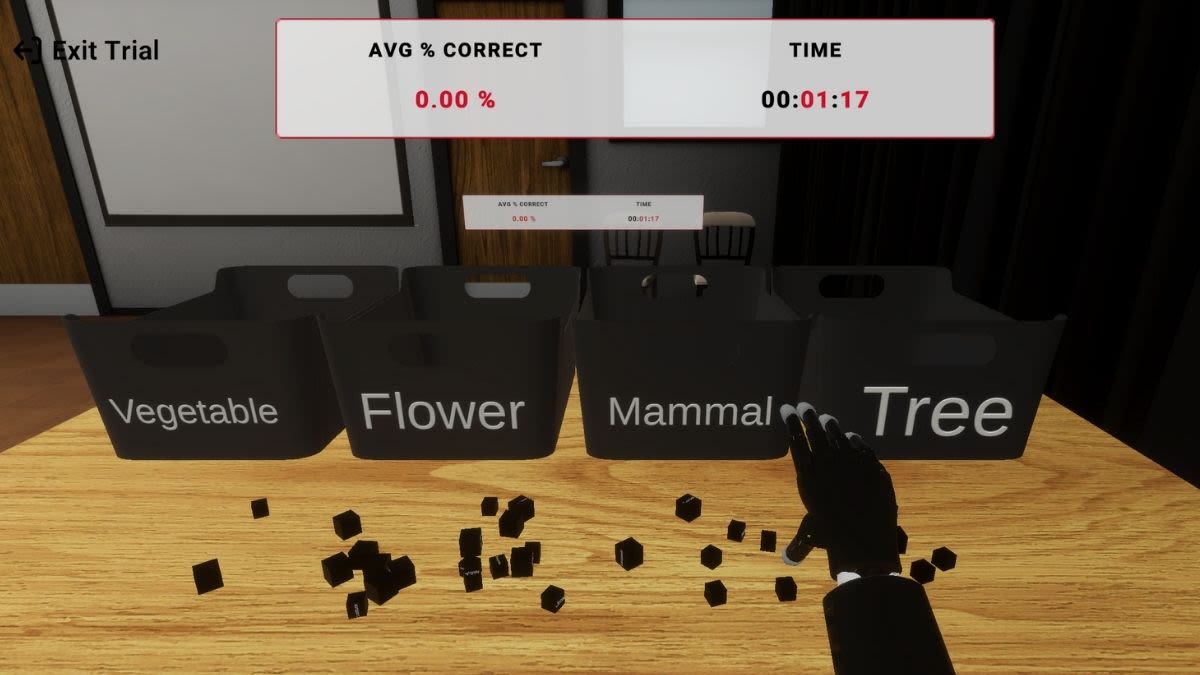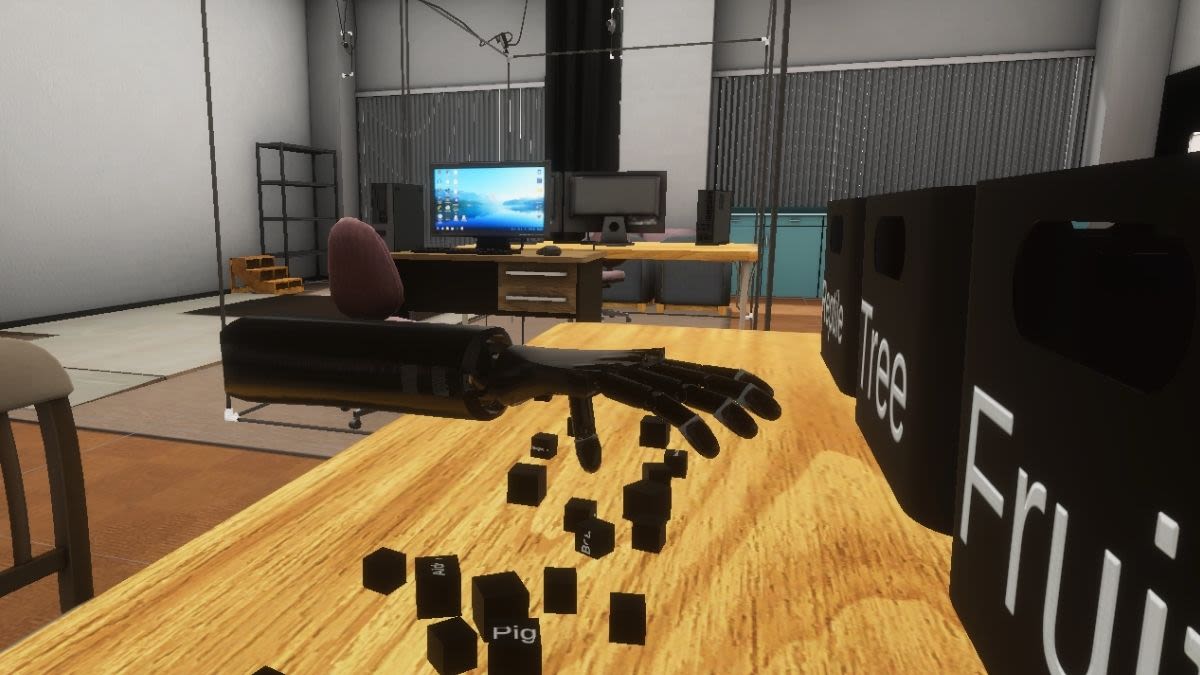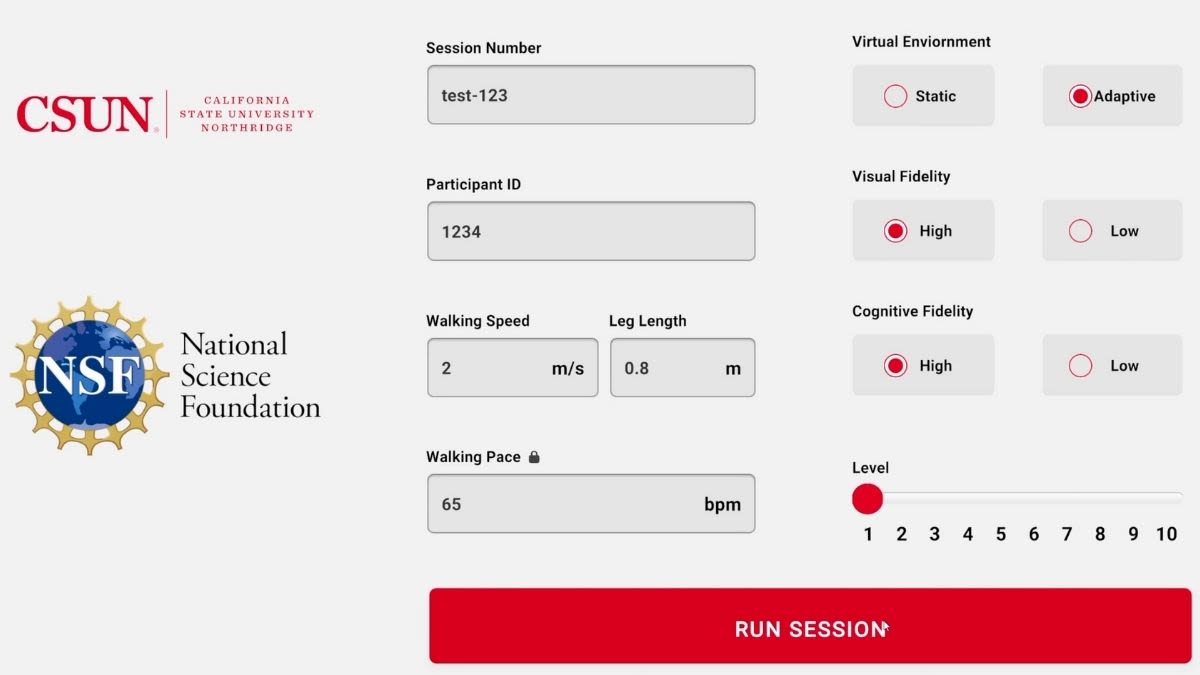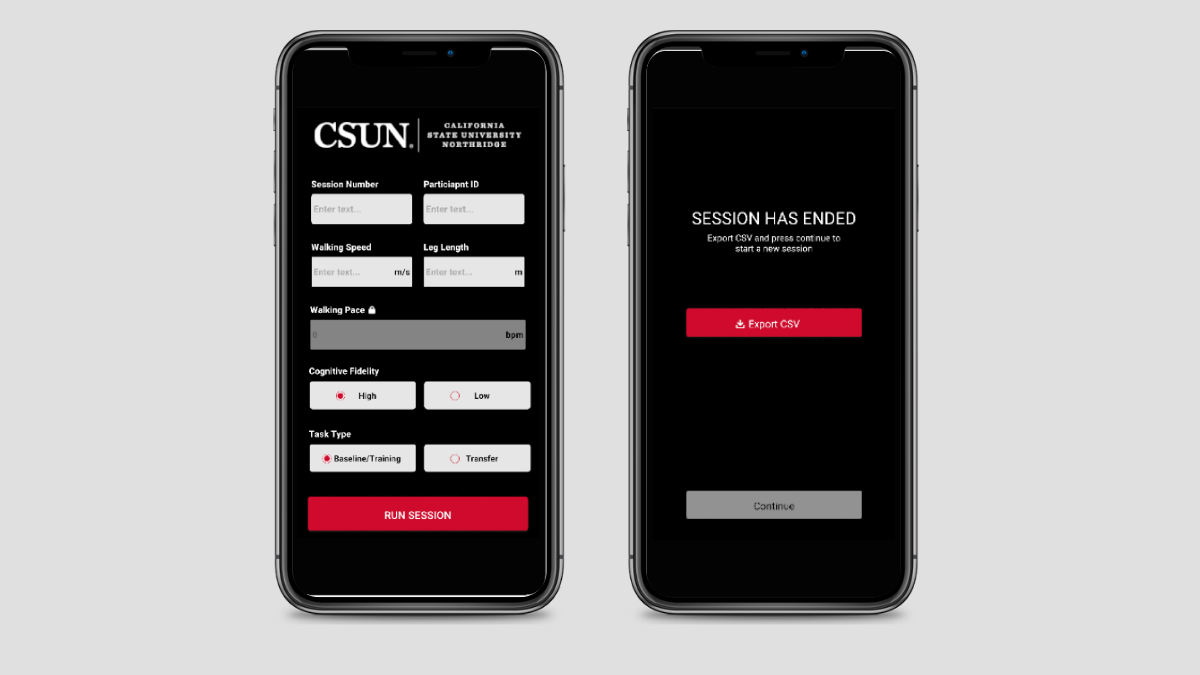
Client
California State University Northridge
Services
Healthcare, Mobile, and AR/VR
More than 50% of adults in the United States have been impacted by musculoskeletal conditions, and many require physical therapy and rehabilitation as a way to improve motor skills. However, there are challenges to rehabilitative care, including lack of access to providers, and poor patient retention and engagement. Virtual reality (VR) provides a unique opportunity to maximize the learning of motor skills, with its potential to generate engaging immersive experiences for balance, gait, and fine motor training.
Recognizing the potential of virtual reality systems in physical rehab, an interdisciplinary team of researchers in biomechanics from the Move-Learn Lab, Visual Information Sciences & Neuroscience Lab, and Computational Mechanics and Smart Structures Lab at California State University, Northridge (CSUN) sought a tech partner to build VR systems that could train skills in adaptive and static virtual environments (VEs). Researchers will additionally investigate VR design factors (visual and cognitive fidelity), user experience, sensorimotor learning, and real-world transfer of the following motor skills via two feasibility studies:
Study I, Locomotive Obstacle Negotiation Task: Learning to navigate over obstacles while walking rapidly.
Study II, Custom-Designed Forearm and Hand Prosthesis Control Task: Learning to use a prosthesis to manipulate objects.
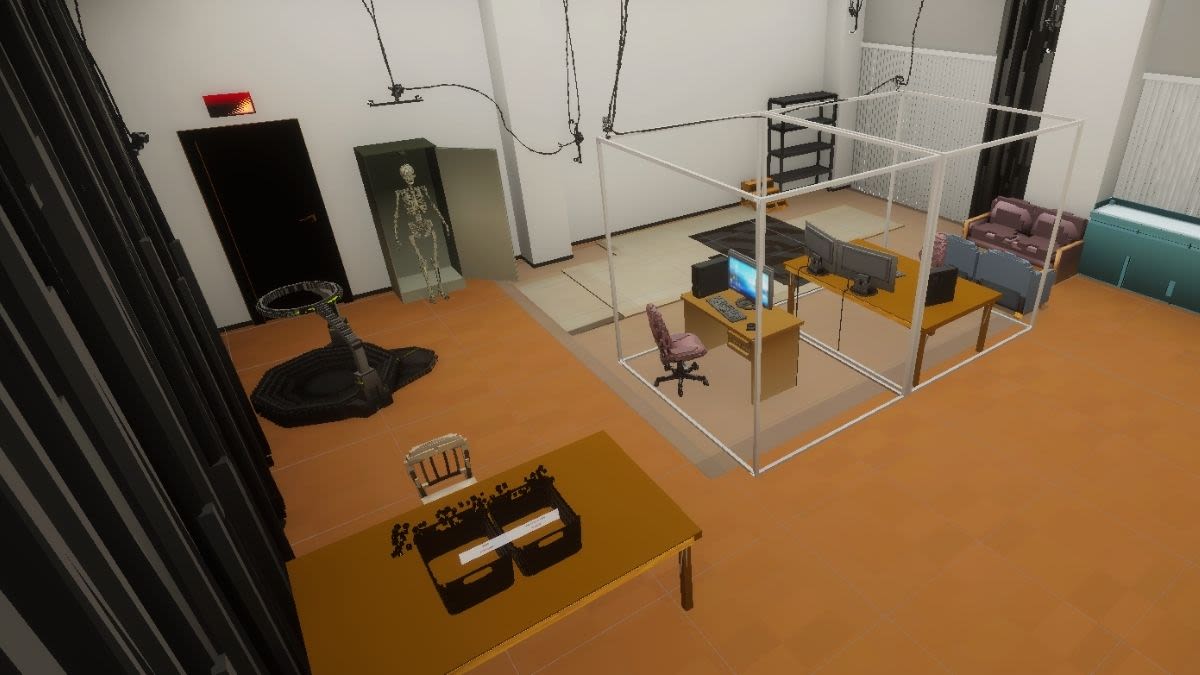
Our Approach
Designing Research-Ready Virtual Obstacles and Objects
CrossComm developed multiple virtual environments to support CSUN’s study objectives. The VEs were designed specifically to accommodate testing parameters such as static or adaptive engagement, visual fidelity, and cognitive fidelity. Static environments were developed so that participants could be tested on uniformly-designed VEs, where the environment does not scale to the skill level of the user. CrossComm’s team additionally developed an adaptive VE version for each study, which could scale in task challenges based on individual user performance.
Since CSUN is planning to test varying levels of visual fidelity (how close the VE resembles the real world), CrossComm’s 3D designer created environments with lower and higher quality visuals for both studies. Researchers additionally aim to test cognitive fidelity for obstacle and prosthesis tasks (how closely the psychological demands in VR mirror the real world). Thus, the VR interactions were developed with the unique task challenge requirements in mind.
Study I: For obstacle tasks, an infinite and dark virtual hallway was created to allow users to walk rapidly while avoiding blocks found on the floor. This environment was designed to mimic a real-world experience where someone may encounter an unexpected or suddenly-appearing obstacle, requiring them to quickly respond. A metronome plays to indicate the suggested walking pace. As a secondary cognitive task, auditory obstacles (high and low pitched tones) are included in each session. This study will examine how a healthy population performs this task, as well as people with stroke to inform future research as to the best VE design considerations for a gait intervention.
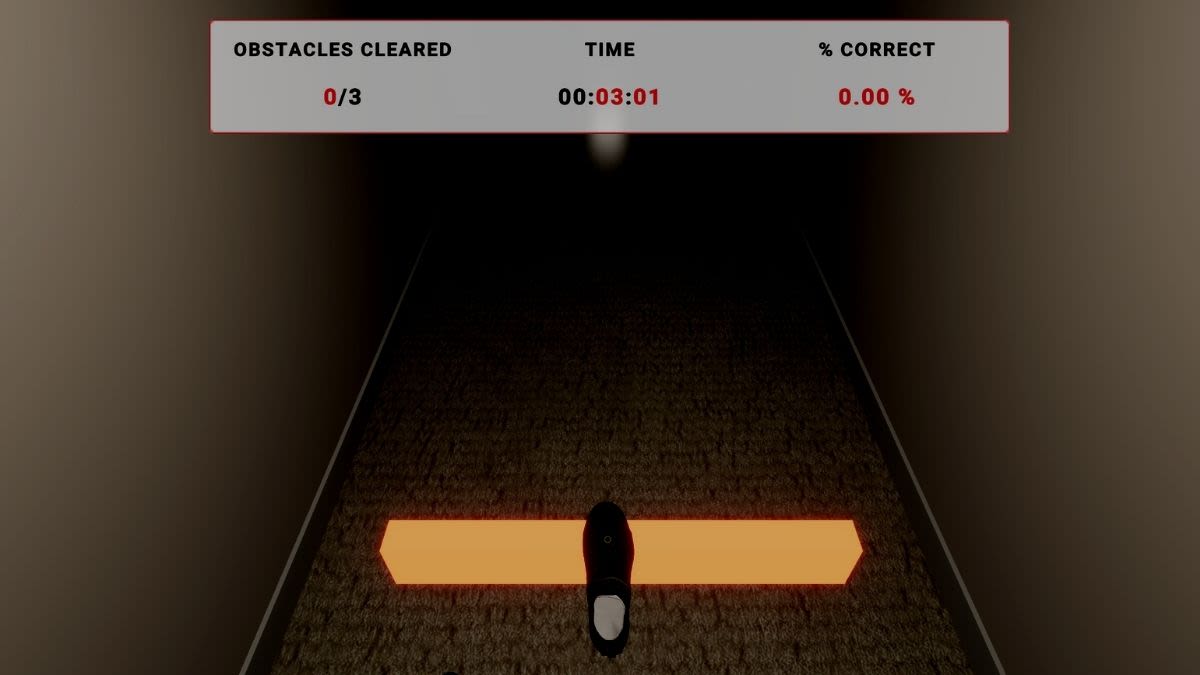
Study II: The VE for prosthetic skills testing is held in a simulated VR lab identical to the physical lab at CSUN. The VR experience generates categorical bins and virtual cubes that a user is tasked to pick up and sort with an upper extremity prosthesis. Low or high cognitive fidelity is reflected by the number of bins a user must sort. This project will examine how a young, healthy population that does not have an amputation performs this task, and will also recruit those with a forearm amputation to inform future interventions.
Integrating Multiple Devices in a Complex VR System
The VR systems required CrossComm to integrate multiple devices that facilitate comfort, safety, and a realistic sensory experience. Collectively, the multiple devices will allow the researchers to quantify biomechanical variables, as well as motor and cognitive task performance for each participant. The following is a snapshot of devices used in the VR system:
Varjo VR-3 headset
bHaptics Tactosy
HTC Vive Trackers with SteamVR
Virtuix Treadmill
Arduino Processor and Circuit Board
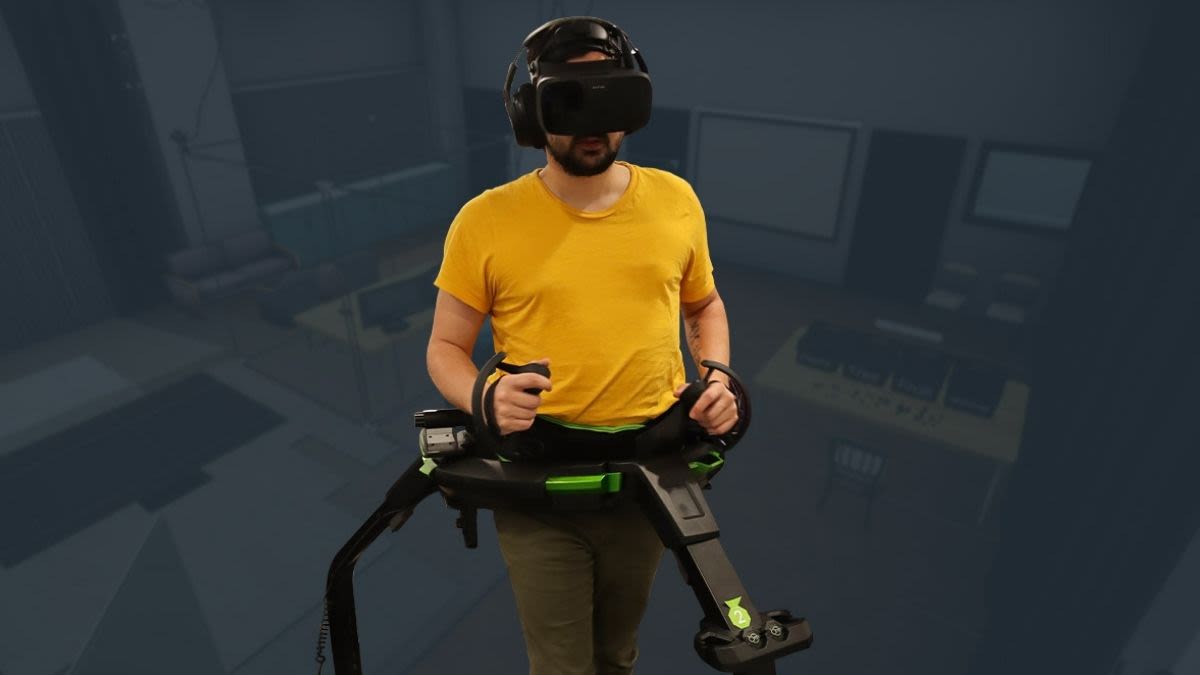
The Varjo VR-3 headset delivers the highest resolution in the industry, and enables the ability to test for low and high visual fidelity in each study. The Varjo additionally has built-in eye tracking to capture data representing gaze during each session. BHaptics Tactosy devices were connected to deliver vibrational sensations to the arms and feet, while the Vive Trackers with SteamVR sensors allow for 3D tracking of devices in real time. In addition to integrating the above hardware, each study had unique device requirements:
Study I: A Virtuix treadmill was integrated for obstacle task testing. The treadmill ensures safety while participants have the freedom to walk, crouch, and jump in 360 degrees.
Study II: In the prosthetic task testing, an Arduino processor and circuit board is placed under the user’s foot to control the movements of the forearm-hand prosthesis in the virtual environment.
Engagement Science Towards Real World Transferability
CSUN hopes to gauge the virtual-to-real-world transferability of motor learning through VR. The data captured in the VEs are designed to investigate the bi-directional human-VR relationship during sensorimotor learning. To capture baseline and real-world transferability data, CSUN created similar obstacle negotiation tasks for users in their physical lab. CrossComm developed a mobile application that captures the real-world data from baseline tests, as well as the real-world retention and transfer tests which are completed by the users in person at CSUN.
Results
Widespread application of VR has the potential to improve physical rehabilitation. By testing the feasibility of VEs, CSUN’s studies will provide insight on the best practices for future research using VR. CSUN will test the feasibility of the VR system developed by CrossComm including: how users interact on a sensorimotor level, how VEs can adapt to meet the training needs of users, and how users’ performance responds to changes in the VEs. A pilot study is set to launch in the Spring.
If you’re interested in taking the next step in your project or idea, we would love to hear from you and discuss whether CrossComm would be the right technology development team for you. Tell us more and receive a free assessment from CrossComm.
